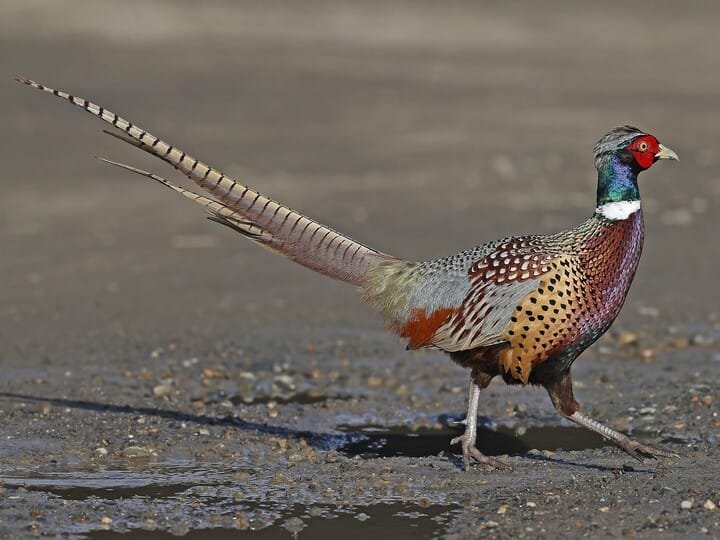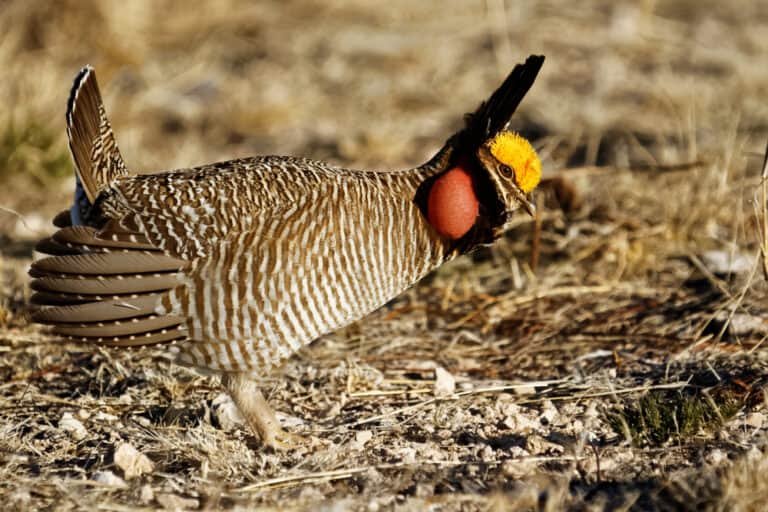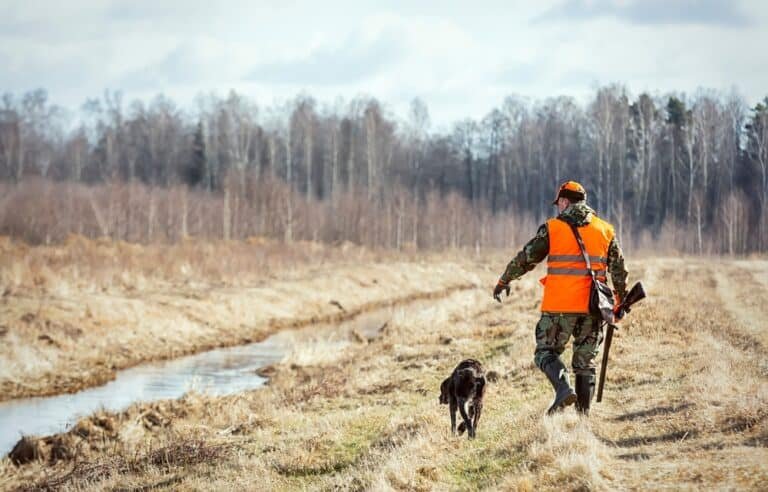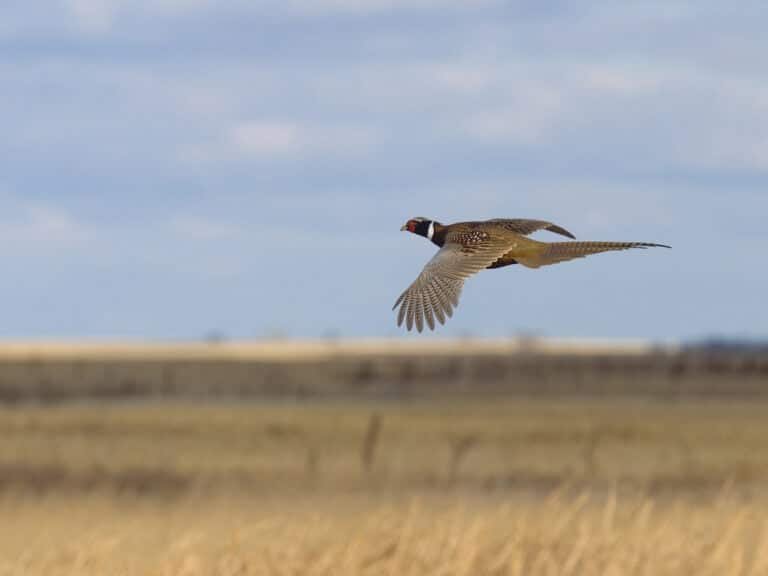The Best Choke for Pheasant Hunting – Top 3 Revealed
Pheasant hunting, a beloved and time-honored tradition, captures the hearts of both seasoned hunters and outdoor enthusiasts alike. This exhilarating sport requires skill, strategy, and a keen understanding of the tools employed. In this blog, we are going to discuss the best choke for pheasant hunting.
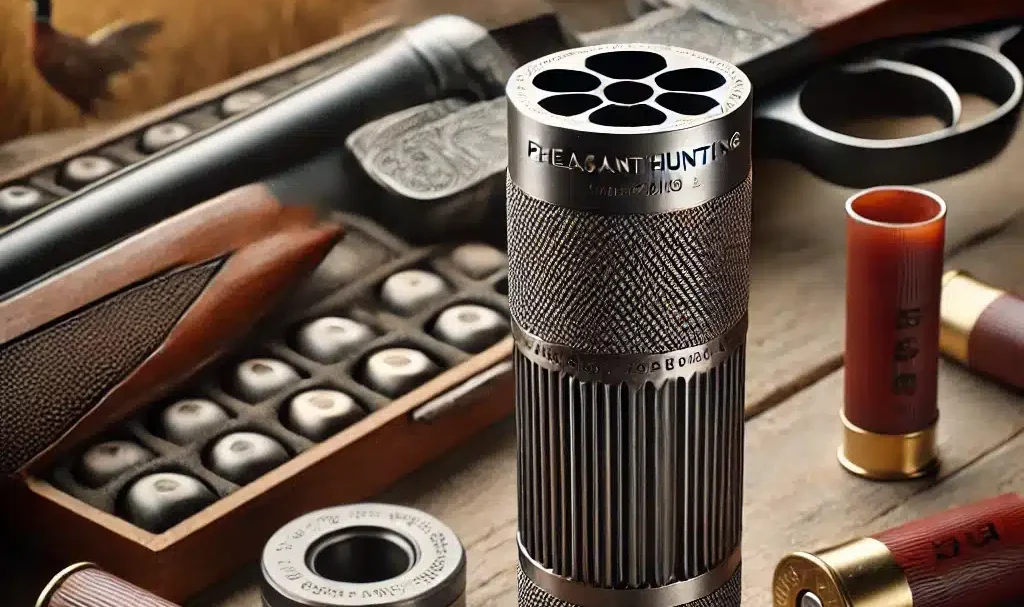
Understanding Chokes in Shotguns
In hunting, a choke refers to an attachment or constriction at the muzzle end of a shotgun barrel. Its primary purpose is to control the spread and pattern of shot pellets as they disperse from the gun upon firing.
Chokes regulate shot dispersion to maximize accuracy and effectiveness at different distances by narrowing or constricting the barrel’s exit.
What is a choke, and what is its purpose?
A choke is a constriction at the muzzle end of the gun barrel. This narrowing controls the spread of shot pellets, affecting their pattern and density upon leaving the firearm.
The primary purpose of a choke is to shape and control the shot pattern, optimizing it for different shooting scenarios. By altering the spread, chokes allow hunters to customize their shotgun’s performance to match varying hunting conditions, whether long-distance precision shooting or close-range shots in dense cover.
Different types of chokes commonly used
Several types of chokes commonly used in shotguns cater to different hunting situations. The first among these is the full choke.
Full Choke: With minimal constriction at the muzzle end, this type produces tighter patterns by keeping pellet dispersion highly concentrated as they travel farther distances.
Modified Choke: These chokes balance range and spread, making them versatile for various hunting scenarios. They provide moderate constriction and are effective in short—and medium-range shots with reasonably dense patterns.
Improved Cylinder Choke (IC): This choke offers less constriction than modified or full chokes. Its looser pattern spread makes IC chokes suitable for close-range shooting or when facing dense cover situations where quick target acquisition is crucial. It provides good pellet density within shorter distances while ensuring enough coverage for effective hits.
How chokes affect the spread and pattern of shot pellets
Choke selection directly influences how pellets disperse from a shotgun’s barrel after firing. A tighter choke, such as full, it will result in denser patterns with more concentrated pellet distribution over longer ranges but may limit effectiveness in closer situations.
On the other hand, chokes with less constriction, like modified ones, produce wider shot spreads and are ideal for shorter distances or when the target is surrounded by thick vegetation.
Chokes achieve their effects by slightly constricting the barrel’s diameter at the muzzle end, causing friction on the shot pellets as they exit. This friction alters their velocity and flight path, determining how tightly or widely they disperse.
It is important to note that factors such as ammunition choice, shotgun make and model, and individual shooting technique influence pattern spread to some extent. Thus, understanding how different chokes affect shot patterns enables hunters to decide which choke best suits their specific hunting needs.
Choke Selection in Pheasant Hunting
Selecting the right choke for pheasant hunting is crucial for achieving optimal performance in the field. Several factors come into play when making this decision. First, the distance at which you anticipate shooting pheasants plays a significant role. If you primarily engage in long-range shots, opting for a tighter choke that provides a narrower pattern will ensure greater pellet concentration and increased accuracy.
Conversely, if your hunting style involves close encounters or thick habitats, choosing a choke with a broader spread pattern will be advantageous in targeting fast-flying birds within close range. Next, considering the habitat where you plan to hunt is imperative.
Pheasants inhabit various terra, such as open fields, dense cover, or mixed landscapes, both tall grass and brush. Each environment demands different choke characteristics to adapt to its unique challenges.
For instance, in open fields where pheasants fly higher and faster, a tight choke can effectively reach those distant targets without compromising shot density. On the other hand, when navigating dense cover prevalent in wooded areas or heavy brush regions where quick shots are essential due to limited visibility and narrow shooting lanes, utilizing chokes with wider patterns.
Additionally, your shooting style should not be overlooked when selecting an appropriate choke for pheasant hunting. Some individuals excel at instinctive shooting techniques with quick reflexes and accurate target acquisition on moving birds.
Others may prefer aiming carefully through deliberate sight alignment before pulling the trigger. Understanding your shooting style will guide you toward choosing a choke that complements your strengths and maximizes your success rate.
Effective Range and Pellet Density
The choice of cook directly impacts the effective range and pellet density, thus influencing your ability to bring down pheasants consistently. Effective range refers to the distance a choke maintains a dense and uniform pattern, ensuring enough pellets strike the target for a clean kill. Tighter chokes, such as full or, extra-provide higher pellet density over longer distances, making them ideal for pheasant hunters seeking accurate shots beyond 40 yards.
However, finding a balance between pattern density and shot velocities is crucial to achieving optimal performance while maintaining ethical hunting practices. When using extremely tight chokes, shot velocities may decrease due to increased constriction, reducing energy transfer upon impact.
This can result in inadequate penetration or wounded birds instead of clean kills. Therefore, choosing an appropriate choke that allows for sufficient velocity while delivering adequate pattern density is essential.
Balancing Pattern Density with Shot Velocity
To achieve optimal performance when hunting pheasants, striking the right balance between pattern density and shot velocity is paramount. A dense pattern ensures multiple pellets hit the target simultaneously, increasing the likelihood of an ethical kill.
However, excessively tight chokes can diminish shot velocity due to increased constriction. This reduction in speed affects both accuracy and penetration power.
On the other hand, looser chokes may provide greater shot velocity but compromise pattern density at longer distances. Finding the ideal compromise involves considering shooting distance and habitat characteristics specific to each hunting scenario.
Experimentation with different chokes during practice sessions is highly recommended before taking them into real hunting situations. This lets you gauge how choke selections affect your shooting style and precision at varying ranges.
You are selecting the right choke for pheasant hunting, which involves carefully considering factors such as shooting distance, habitat characteristics, shooting style preference, effective range requirements, pellet density expectations, and balancing pattern coverage with shot velocity.
A well-informed choice will enhance your hunting experience and increase the likelihood of successful harvests while maintaining ethical hunting practices.
Types of Chokes
Your distance from the target determines the choke you need. The choke of a shotgun determines shot string only. It has no bearing on shot speed (velocity) or distance (range). That is, the choke does not alter the shotgun’s power—it just controls how tight or spread out the pellets will be at a specific distance.
Cylinder choke is an non-constricted barrel. The shot string spreads quickly.

Improved Cylinder choke has a slight constriction. It allows the shot string to spread fairly quickly. This is a good choice for quail, rabbits, and other upland game at relatively close ranges.

Modified choke has moderate constriction. The pellets stay together longer, making the shot string denser and more useful at longer ranges. This choke is used often when dove hunting and when using steel shot to hunt for ducks or geese. There is also an Improved Modified choke that is slightly tighter than Modified.

Full choke has tight constriction. The shot holds together even longer, making this choke good for squirrels, turkey, and other game shot at 40-yard and longer ranges. Turkey hunters sometimes use Extra Full or Turkey choke for even denser patterns at long range.

Popular Choke Choices for Pheasant Hunting
Full Choke: Precision Shooting with Controlled Patterns
When it comes to pheasant hunting, the full choke is often favored by experienced hunters seeking precise shots at longer distances. This choke constricts the shot pattern, resulting in tighter groupings that enhance accuracy.
Its ability to keep pellets tightly clustered increases the chances of hitting targets at extended ranges, making it ideal for peas, known for their mysterious nature.
However, it’s important to note that while the full choke excels in long-range shooting, it may have limitations regarding close-range shots or hunting in dense cover situations.
The tight pattern can make hitting fast-flying birds within a limited range more challenging and increase the risk of potentially damaging or missing them altogether.
Modified Choke: Versatility Across Different Scenarios
The modified choke balances between tight patterns and wider pellet dispersion offer versatility across various shooting scenarios encountered during pheasant hunting.
This choke provides a moderate constriction that allows pellets to spread out more than with a full choke at shorter distances, increasing the chances of hitting fast-moving birds within closer ranges.
Its balanced pattern density is well-suited for hunting in open fields or areas with light cover where targets can be encountered at different distances. The modified choke offers hunters increased flexibility without compromising too much on accuracy or pellet density.
Improved Cylinder Choke: Adaptability in Close-Range
For pheasant hunters faced with close-range shots or thick cover situations (such as densely vegetated areas), the improved cylinder choke can be an excellent choice due to its broader spread patterns and wider pellet dispersion.
The improved cylinder choke allows for a great shot spread compared to tighter chokes like full or modified chokes, making it easier to hit fast-moving targets within a limited range.
The wider pattern provides an advantage when hunting in dense cover, where pheasants can quickly take flight from close quarters. However, it’s important to acknowledge that the trade-off for this adaptability in close-range situations reduced long-distance accuracy compared to tighter chokes.
Therefore, carefully considering the hunting environment and shooting requirements is crucial when opting for an improved cylinder choke. Pheasant hunters have several choke options, each with its benefits and considerations.
The full choke offers precision shooting with tight patterns at longer distances while potentially posing challenges in close-range or dense cover scenarios—the modified choke balance between pattern density and versatility across different shooting situations.
The improved cylinder choke provides broader spread patterns suitable for close-range shots or thick cover situations but sacrifices some long-distance accuracy. Understanding these popular choices allows hunters to make informed decisions based on their specific hunting needs and preferences.
Specialized Chokes for Pheasant Hunting
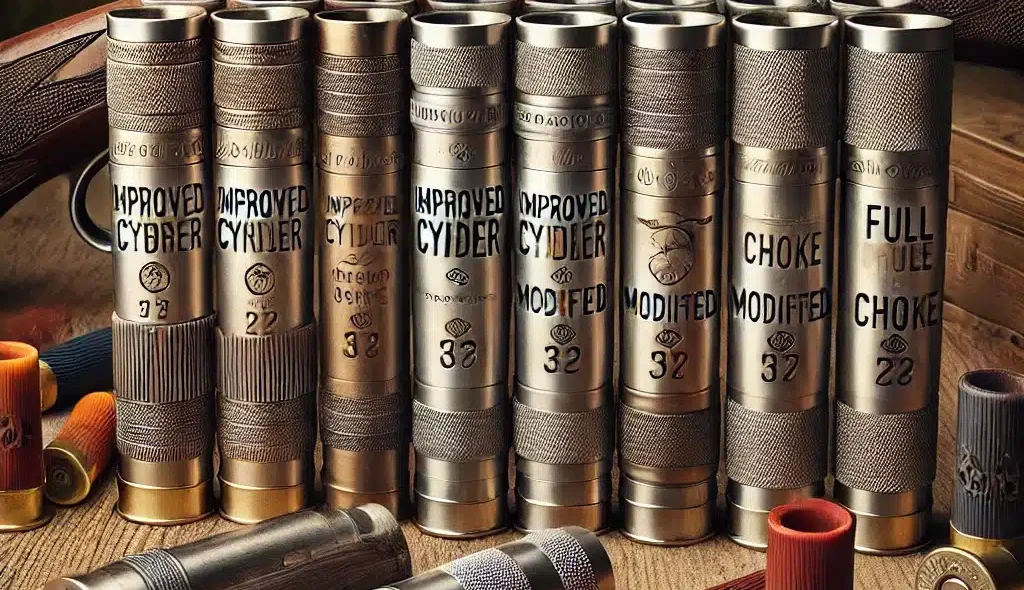
Extended Range/Long
Extended-range or long chokes unleash the potential for precise long-distance shots. At extended ranges, they offer a tighter pattern and increased pellet density, maximizing the effective range and enabling hunters to target pheasants in open fields or other vast landscapes.
Extended-range chokes, with their ability to produce narrower patterns and concentrate shots, provide a superb option for skilled sharpshooters to take down elusive birds far beyond the typical effective range of standard chokes.
However, these specialized chokes may require careful adjustment to find the right balance between pattern density and shot velocity—essential factors that can greatly impact accuracy and effectiveness.
Conclusion – Best Choke for Pheasant Hunting
Embracing the art of pheasant hunting choke selection demands careful consideration of various factors such as distance, habitat, shooting style, and personal preference. Each type of choke has unique advantages and considerations.
There is no shortage of options available, from full chokes for precision shooting at longer distances to modified chokes offering versatility across different scenarios and improved cylinder chokes ideal for close-range encounters or thick cover situations.
When selecting the best choke for pheasant hunting, it is crucial to weigh these choices against your specific hunting needs while also considering your skill level as a shooter.
Remember that experimentation and understanding your shotgun’s performance will help you decide which choke suits you best. Ultimately, success in pheasant hunting mainly depends on choosing the right choke and honing one’s skills through practice and experience.
So venture confidently, armed with knowledge about specialized chokes, and embrace the exhilarating journey of pursuing elusive pheasants with unwavering determination. Even if challenges arise during each hunt, remember that every moment spent in nature’s embrace is an opportunity to grow, learn, and appreciate the beauty of this ancient pursuit.
Lorem ipsum dolor sit amet, consectetur adipiscing elit. Ut elit tellus, luctus nec ullamcorper mattis, pulvinar dapibus leo.

